December/January in our Gardens by Philippa Thomas.
December sees the shortest day of the year. Winter officially begins on the 21st December. We can experience some biting cold winds though sometimes, colder weather can bring drier and calmer conditions too. Frost is our biggest concern this month and now, all deciduous plants are dormant. Berries are the jewels of our December gardens, and our birds are in their element, though shorter days give birds much less time to forage. Some of our ‘berry stars’ this month are Holly, Pyracanthas, Cotoneasters, Hawthorn, Mistletoe, Rose-hips, Crab apples, Japanese Quince and Winterberry.
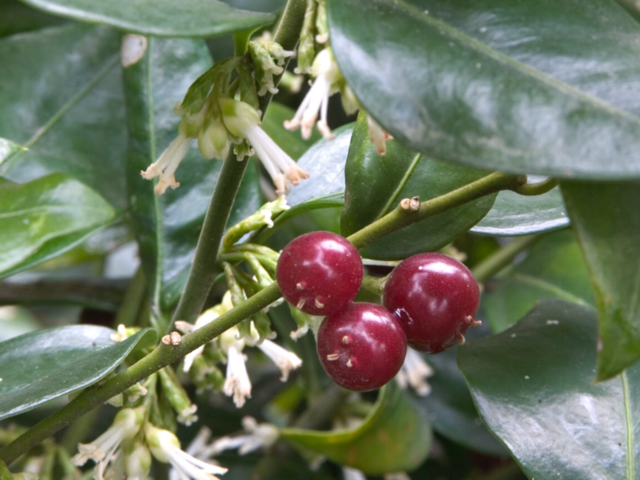
One of my absolute favourites at this time of the year, highly scented evergreen Sarcococca
Then, other special scented winter delights are Sarcococcas, Daphnes, Winter Honeysuckle and our incredible Witch-Hazels, Hamamelis Mollis, etc..all these can withstand our harsh cold winters. This is the perfect time to plant trees. If you decide to plant a Holly, ensure you have a self-fertile variety or plant a male and a female specimen to ensure berries. Drench, drench and drench again their root balls with water so that their roots will not rise by making bumpy surfaces.
So, let’s connect with nature. Let’s don our gloves and scarves and of course, a hot drink in tow. A blast of cool fresh air and some pottering about can do us the world of good and then, our gardens of course, need a little help in order to withstand our oncoming winter elements… THERE IS A GREAT HEALING POWER IN DIGGING, SENSITIVITY CREEPS UP THE FORK INTO OUR HANDS AND BODY AND LEGS, THEN OUR BRAIN RELENTS, SURRENDERS AS ONE IS AT PEACE IN OUR GARDEN. Again, remember some days between Christmas and the New Year can be perfect for some work because in time, possibly late January, heavy rain and hard frost will put a full stop to any productive activity.
‘There is nothing like impossibilities for getting a gardener’s energies up’,
Henry Mitchell.
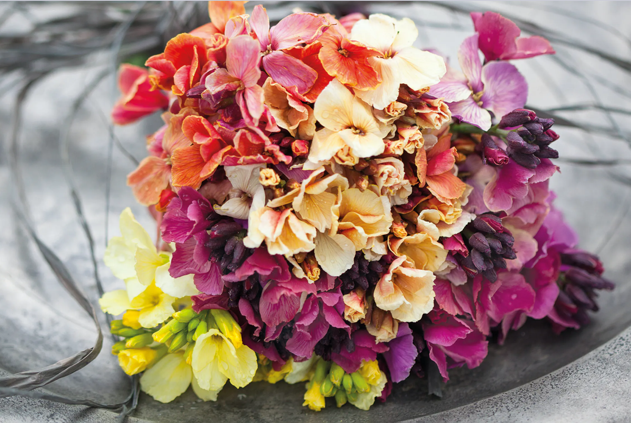
We have experienced such a mild Autumn, we might still get away with planting a few beautifully scented Wallflowers
Do you know that milder winters may give us the opportunity to grow more tender plants but then, other traditional favourites are suffering, particularly such plants as tulips that need a cold winter with low temperatures to form flowers, they can really struggle. Apple trees also need winter chill in order to flower well and set fruit.
December does arrive generally, as one of the most joyful and full of fun months of the year and a Christmas wreath is such a welcome sight to see on our hall doors.
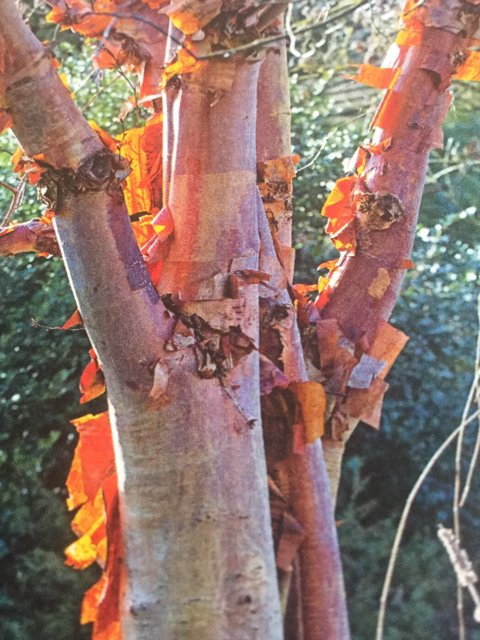
The present beauty of Acer Griseum, the Paperbark Maple.
Winter is the most wonderful time to look and examine tree silhouettes. Our deciduous trees realise that winter is here and they have now dropped their leaves as otherwise, their leaves would freeze on the trees. Mushrooms etc, in turn are being fed by the nutrients in our fallen leaves. WE MORE THAN LIKELY, WANT OUR CHRISTMAS AND NEW YEAR TO BE MAGICAL AND SPARKLING AND THE BEST CHRISTMAS EVER, so maybe get into this festive spirit by making our own home grown Christmas wreath or perhaps, we could make a living wreath: maybe, all the family could contribute and give as a present to friends and neighbours. Echeverias and Succulents put on a super show for living wreaths.
CHRISTMAS WREATHS
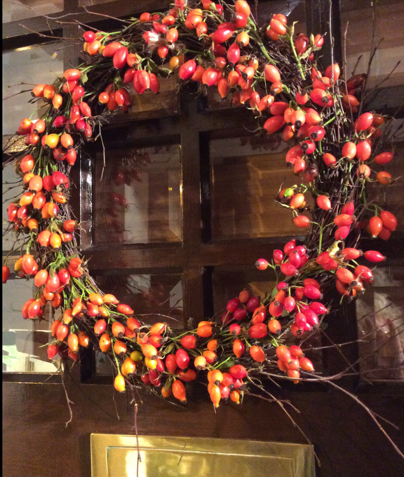
Bring your outside to your special Hall door. These are Rosehips sprayed with yacht varnish, interwoven on Silver Birch twigs
Maybe, go large with twigs and small branches and ivy for a dramatic display. Outdoor wreaths should last a good four/five weeks, so our preparations can begin in late November. Indoor wreaths look fresh for about two weeks, depending on how warm it is. The stems of Willows and Dogwoods make a great alternative wreath, and then no base is needed. We could experiment too, with Bay leaves, Box, Eucalyptus and Fatsia, all last well, outdoors…., even the fluffy seed heads of Old Man’s Beard, Clematis Vitalba can decorate a wreath so beautifully. An old wreath from the attic! can be doctored up with feathery stems, berries, limes, cinnamon sticks, baubles, etc. …If we’re simply not into it, maybe we can buy a pre-made padded base rather than making our own…., then, the world is our oyster in choosing our decorations….we can go all out, …just simply enjoy the randomness of it all! Yet, for some of us again, Christmas isn’t Christmas without the dark green, lustrous shine of holly leaves, a sprig or two, placed here and there adds such festive cheer.
CHRISTMAS WREATHS HAVE A SURPRISINGLY DEEP HISTORY “The tree gave birth to the wreath” says Ace Collins, author of ‘Stories Behind The Great Traditions of Christmas.’ “The custom of bringing evergreens home during the winter began in the 16th century among northern and eastern Europeans – with Germans generally credited for starting the Christmas tree tradition. During this period, pruning the tree was a part of the preparation process. Limbs were often cut off in an attempt to make the tree more uniform in shape or to fit into a room”, instead of throwing the pieces of greenery away, the Europeans wove the excess into wreaths. “These people were living in a time when everything in their lives was used until it was gone”, says Collins. Generally, these wreaths originally served as Christmas tree ornaments and not as standalone decorations we’re familiar with today. It was simple to hang a circle onto the branches of a tree but the shape was also significant as a representation of divine perfection. It symbolised eternity, as the shape has no end.
Best to give our fresh greens (for making a wreath) a thorough soaking to rehydrate them, I usually immerse them in the bath with cold water for approx 24hrs, so that they can absorb as much water as possible then, I regularly mist the wreath when complete, every 1-2 days in order to keep it properly hydrated so that it will last longer, sphagnum moss will respond beautifully to being misted. Adding a humidifier for indoor arrangements can also help to keep foliage moist.
Fresh Christmas Trees: Norway Spruce is the traditional choice and holds its needles well as does Nordmann Fir, which has thick needles with a silvery underside.
GLOBAL WARMING
Is it possible that our sequence is getting slightly out of control?
Think, we must occasionally, remind ourselves that our earth’s surface is gradually heating, so too are our oceans and atmosphere. All this is primarily caused by human activity, the burning of fossil fuel that pumps carbon dioxide (CO2), methane and other greenhouse gasses into the atmosphere. SO LET’S TRY AND REDUCE, REUSE AND RECYCLE.
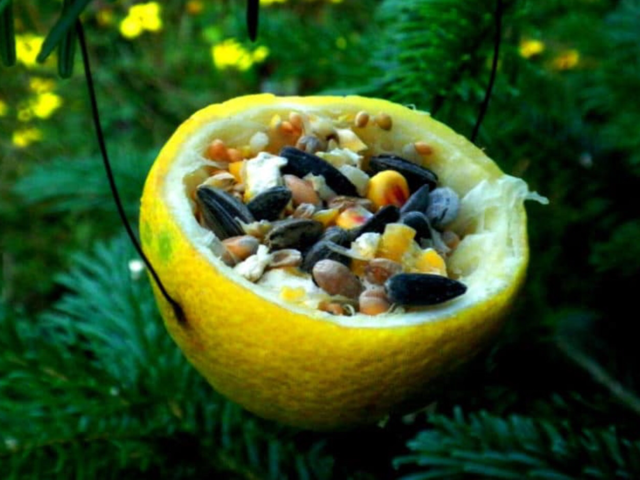
Starving birds will love us for reducing, reusing and recycling.
Some easy and simple ways to stop Global Warming:
- Reduce, Reuse And Recycle.
- Reduce waste.
- Up cycle Furniture.
- Recycle clothes.
- Bring our own shopping bags, here and there.
- Replace regular incandescent light bulbs.
- Buy energy efficient appliances.
- Turn off unnecessary lights.
MIGHT DO, MAYBE DECEMBER, JANUARY JOBS.

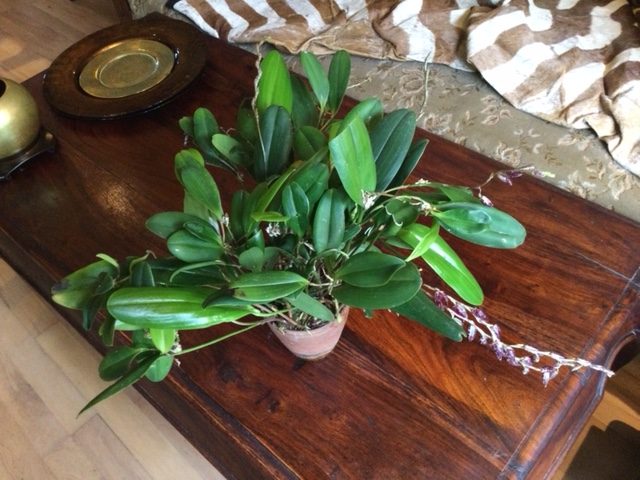
Pleurothallis Violacea. This orchid is approximately 12 years old. I took this photo on 7th December, it has 9/10 flower spikes
- Good to trim back lavender once it has finished flowering in order to stop it growing leggy.
- Pull rather than cut the last of our Alstroemerias, pull rather than cut the stems as one does with rhubarb….. This encourages more growth from below ground level and will more than likely, give a second flush, next year.
- Best to avoid walking on lawns where possible as we can compact the soil and damage the stressed grass.
- Still, a good time to prune Wisteria, Climbing Roses, be careful about the natural structure of Japanese Maples.
- Mulching around the base of tender shrubs provides insulation, moisture retention and weed control.
- Decent food will provide the essential nutrients for our birds in their time of greatest need. Maybe, don’t overfill the feeder as food could go off if the birds aren’t active, instead add a small amount at a time and regularly clean the feeders to stop disease from spreading.
- Time to peruse seed catalogues, resist planting seeds too early.
- After all the leaves have fallen from the trees, be sure to have our gutters cleared ….They are likely to be filled with withered foliage, twigs, clogging and preventing them from doing their job.
- Remember when storing fruit that it is not touching each other ….individual cultivars are kept separate as they ripen at different levels.
- Maybe, cheer up dark long winter nights with some exciting soft warm outdoor lights which can create a magical glow on the cold winter landscape.
- Maybe, pick some Jasmine sprigs in bud for a vase, in time the scented buds will open in water.
Wishing You All This Christmas And For Our New Year 2022, The Timeless Treasures Of Christmas, The Warmth Of Home, The Love Of Family And The Company Of Good Friends.
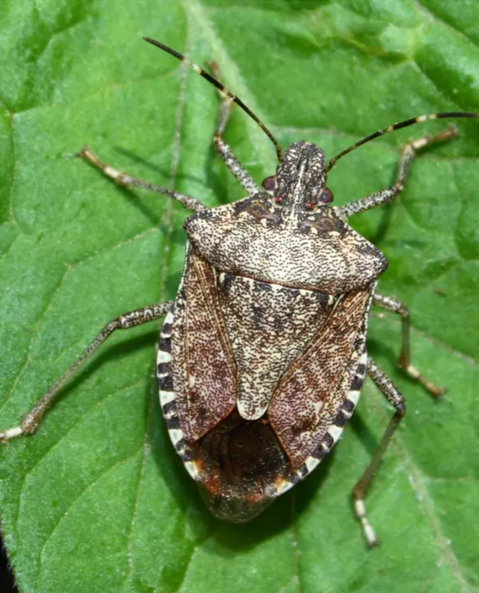
The Brown Marmorated Stink Bug, native of China, has been caught in a Pheromone trap set up at RHSI Garden, Wisley in Surrey. It sucks the juice and life out of fruit plants.
